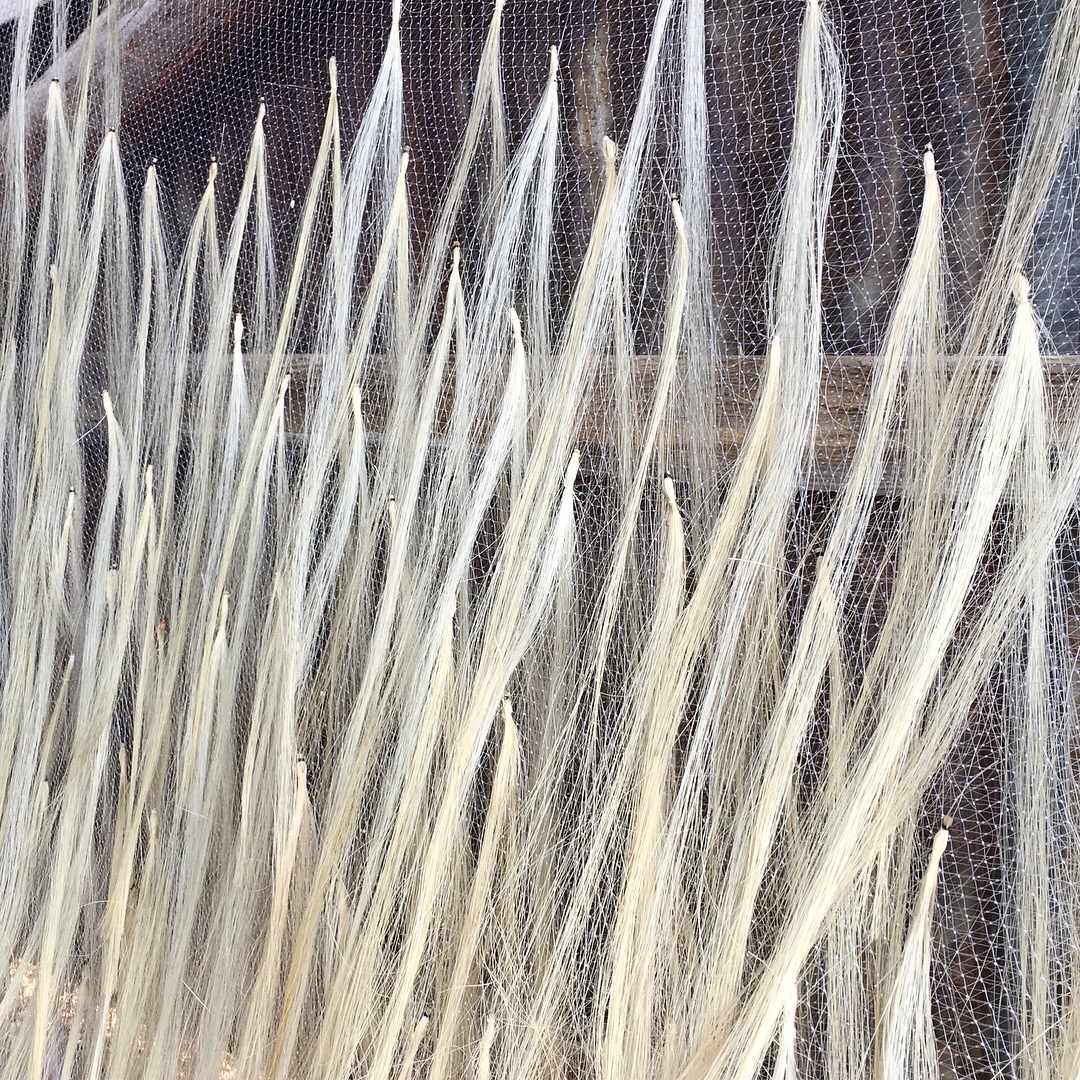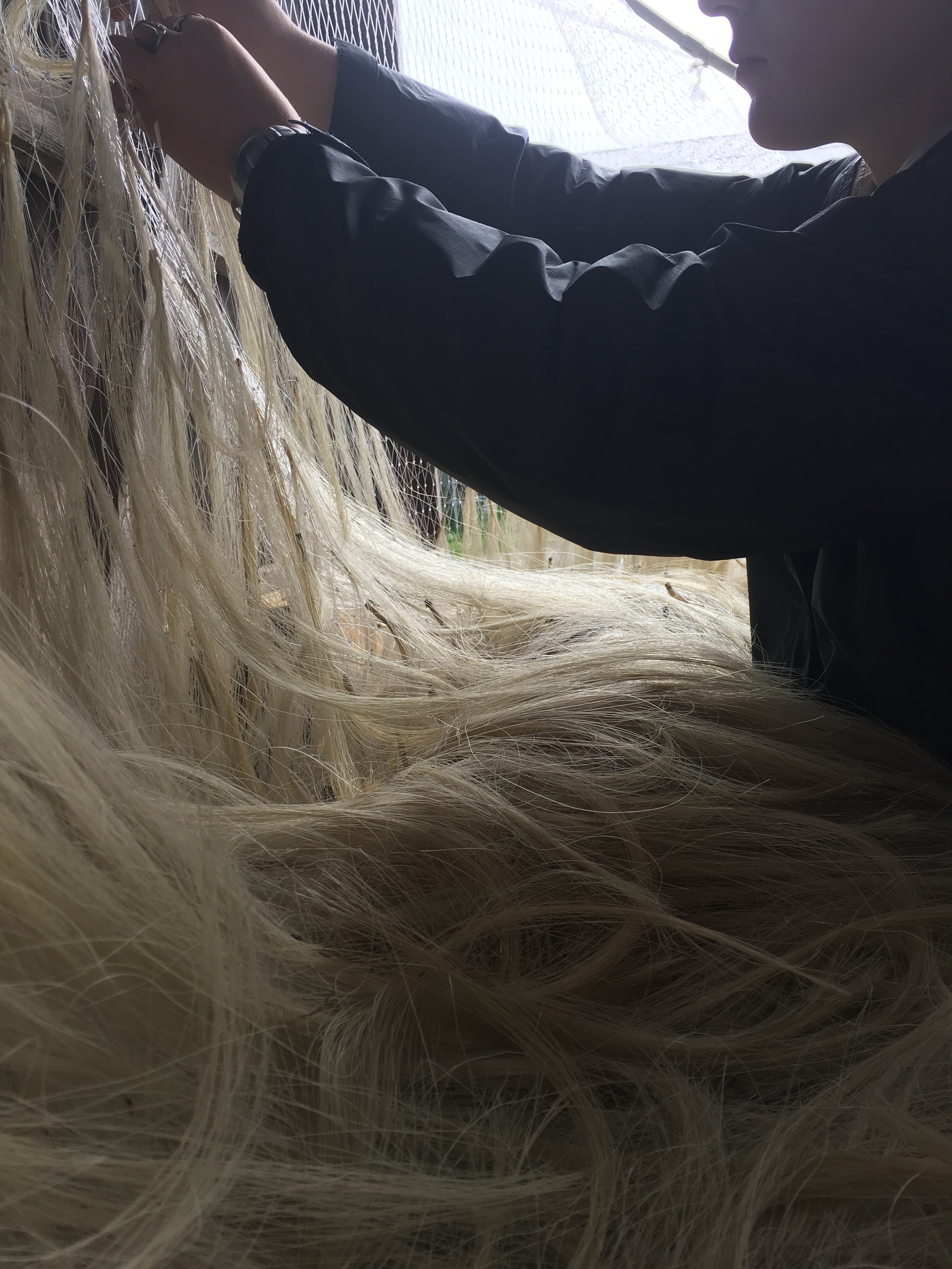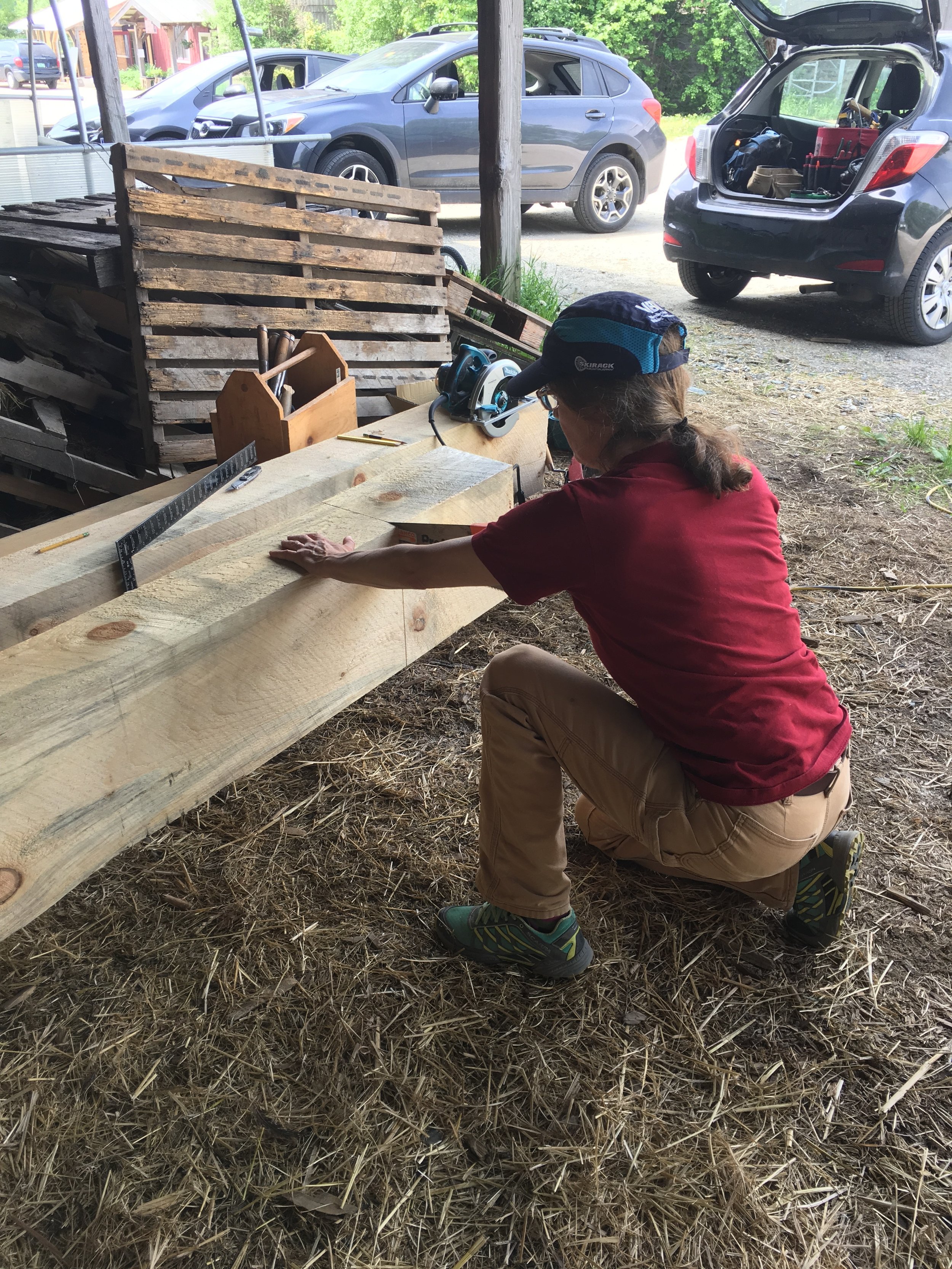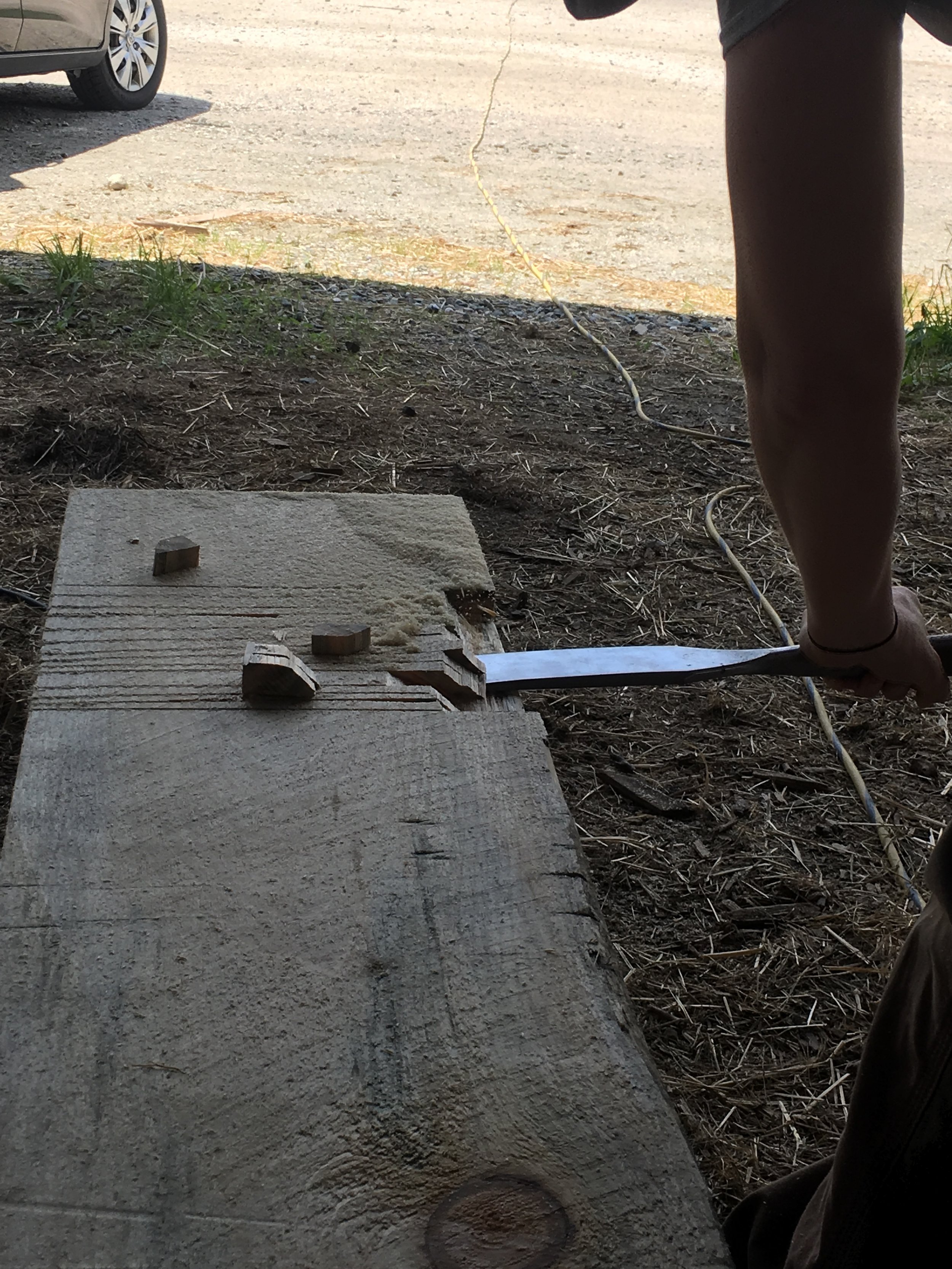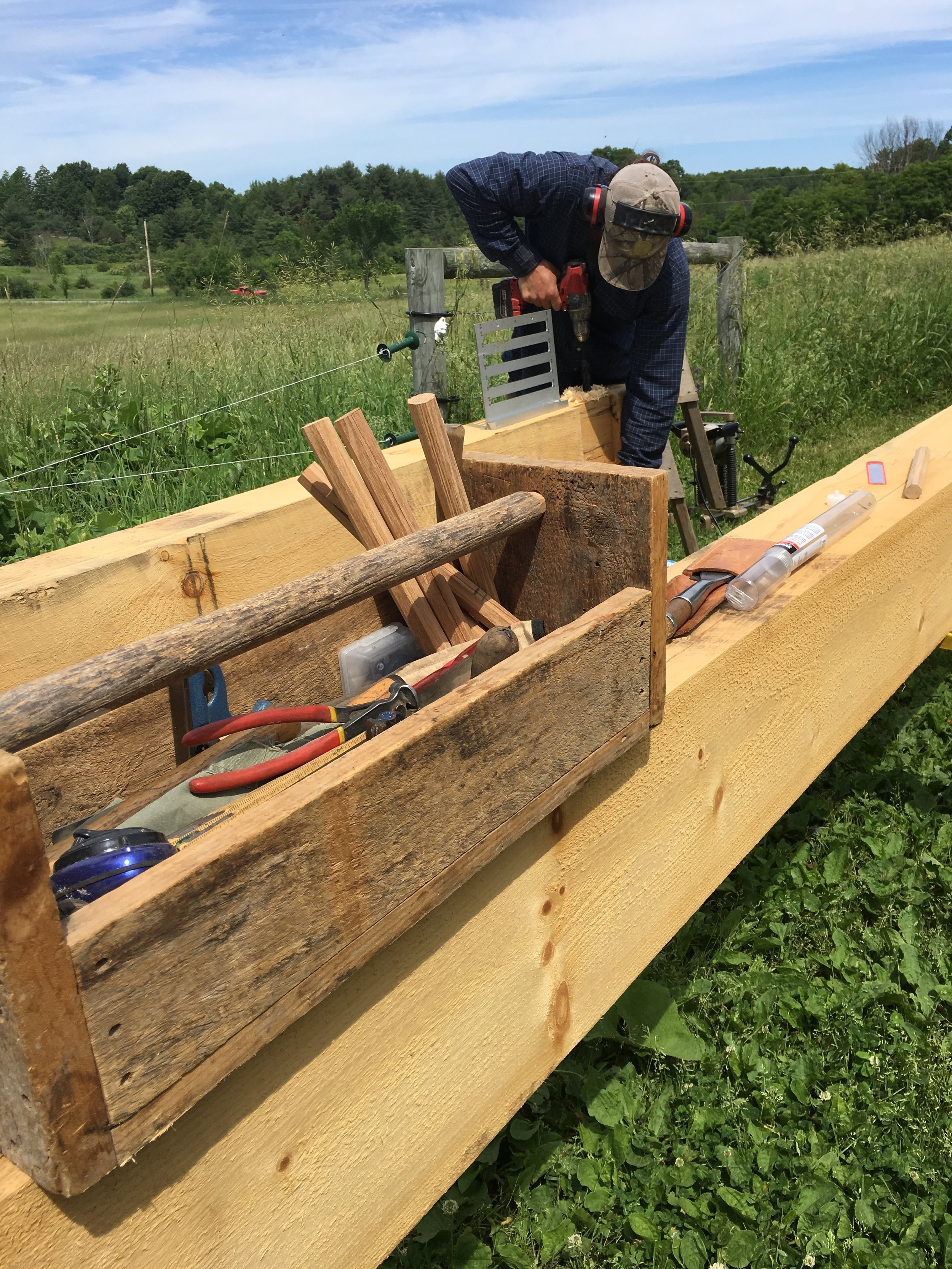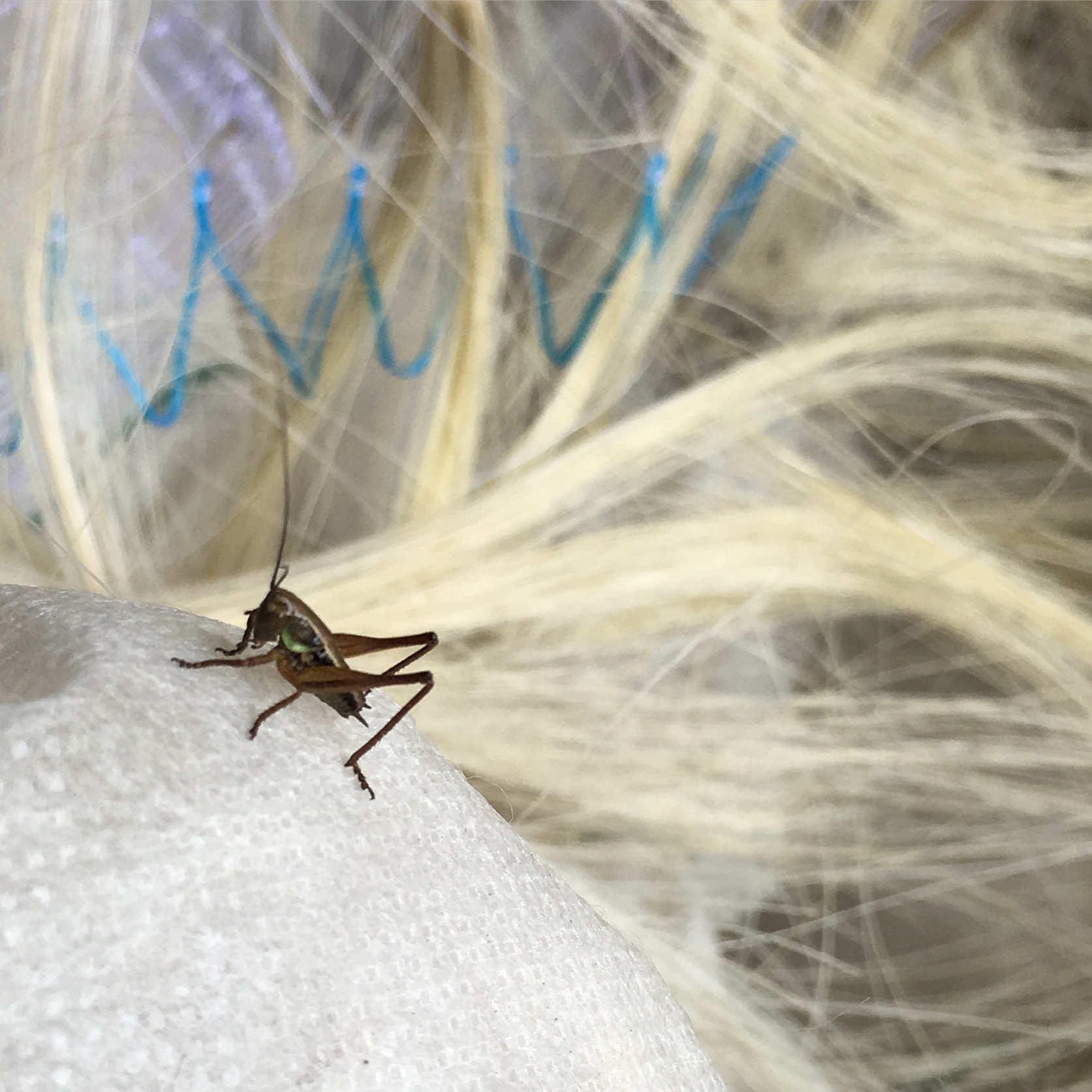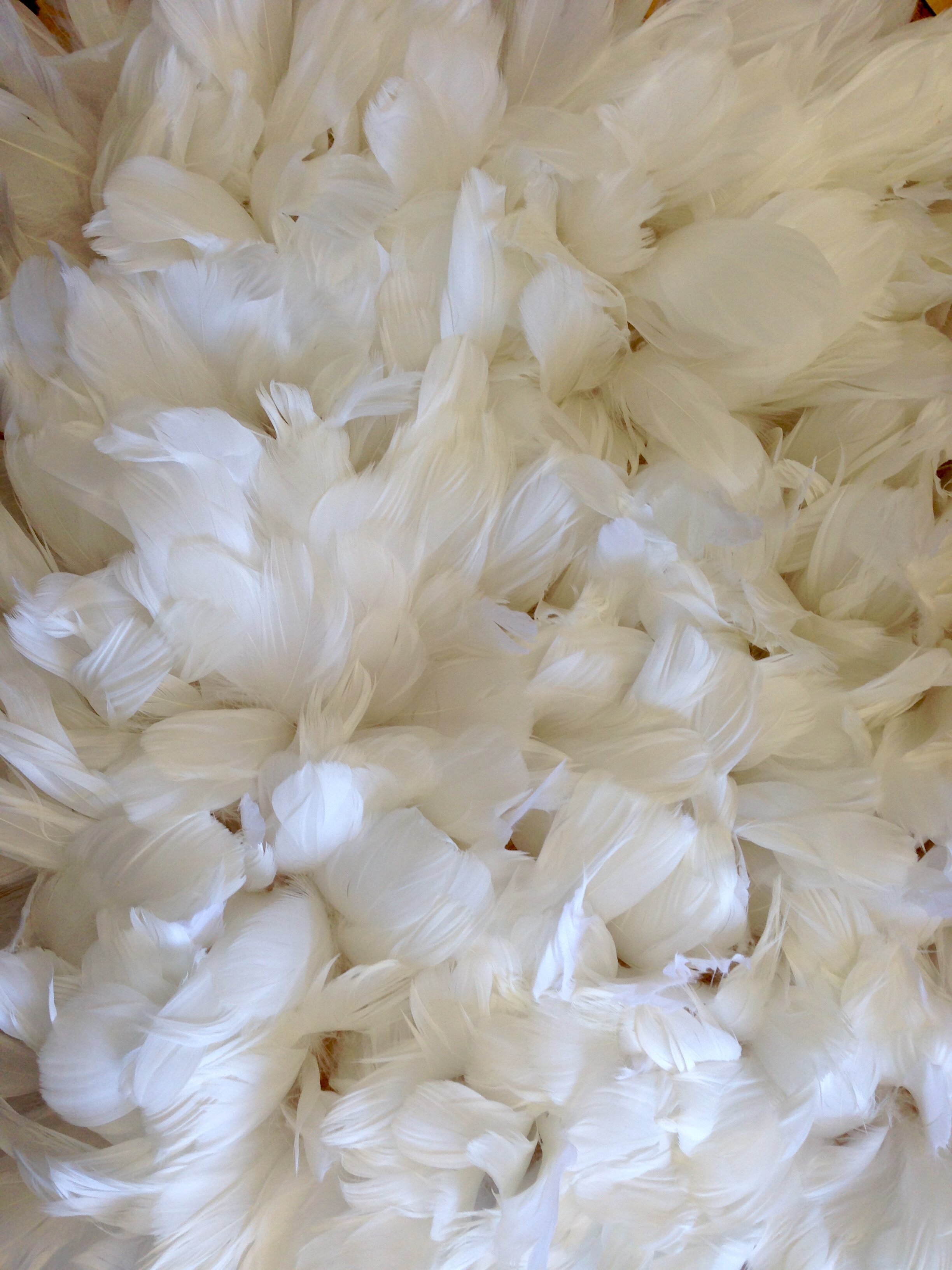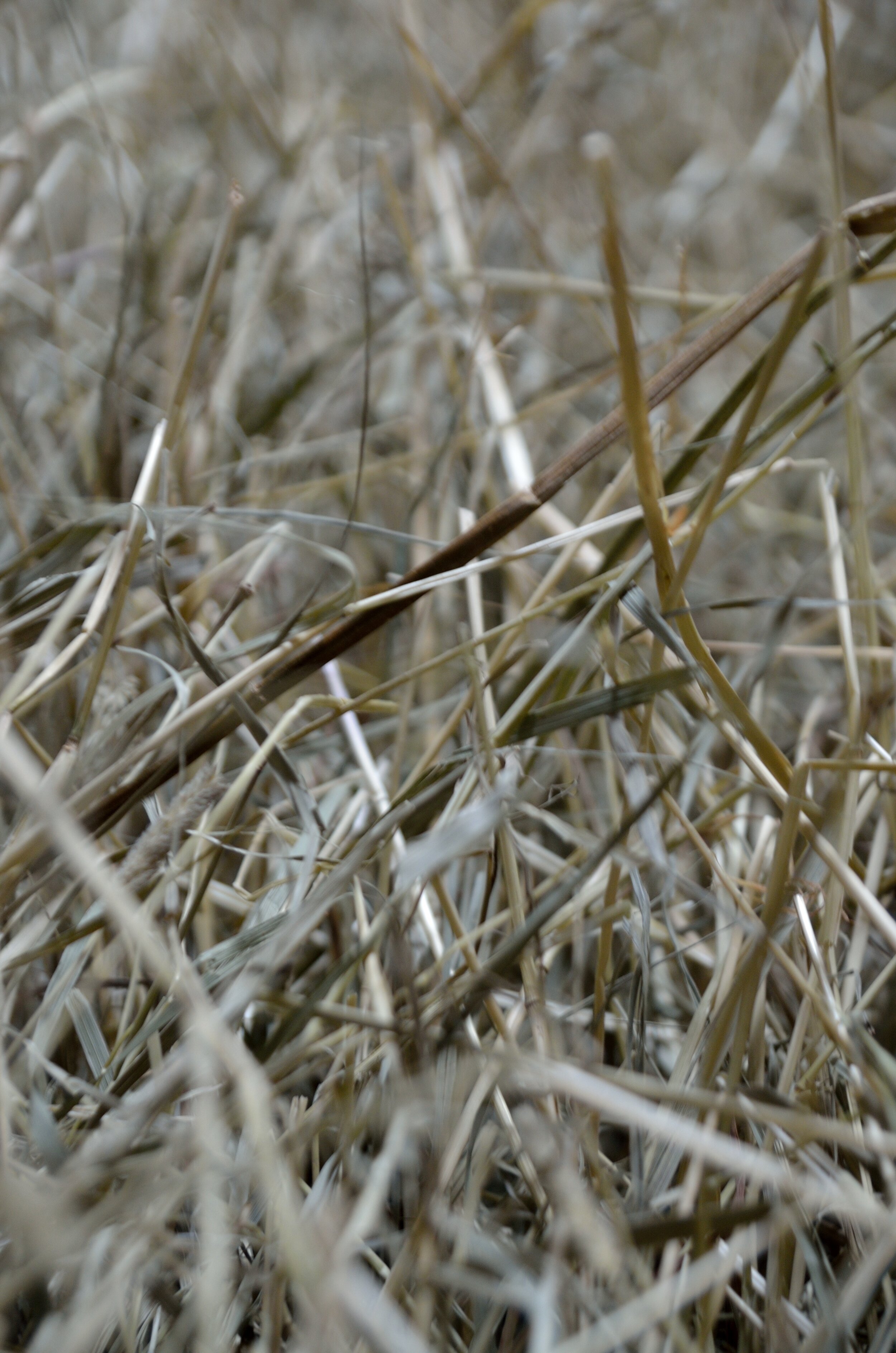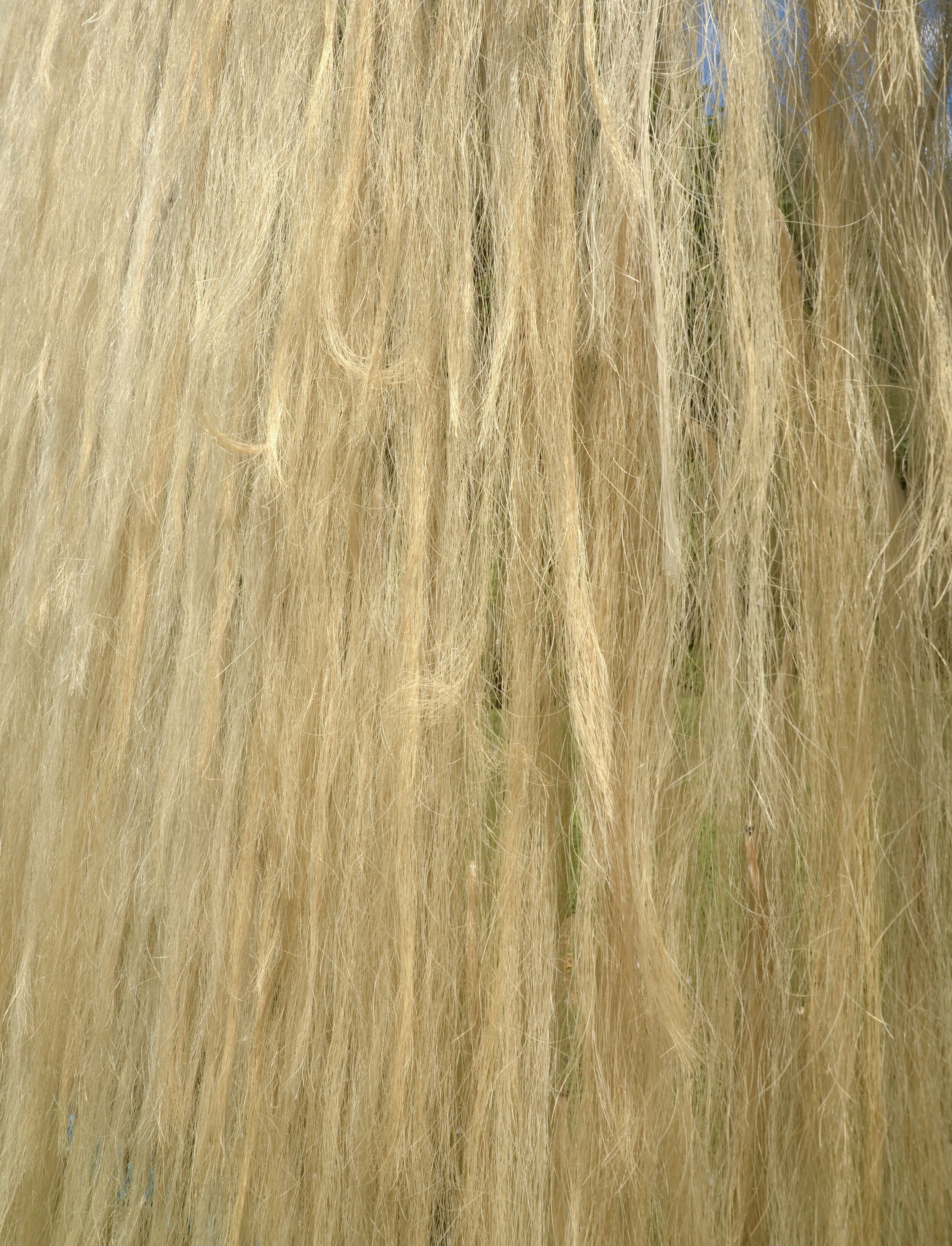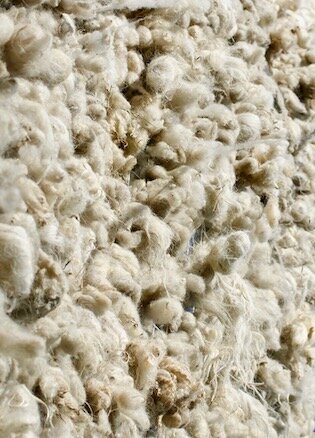

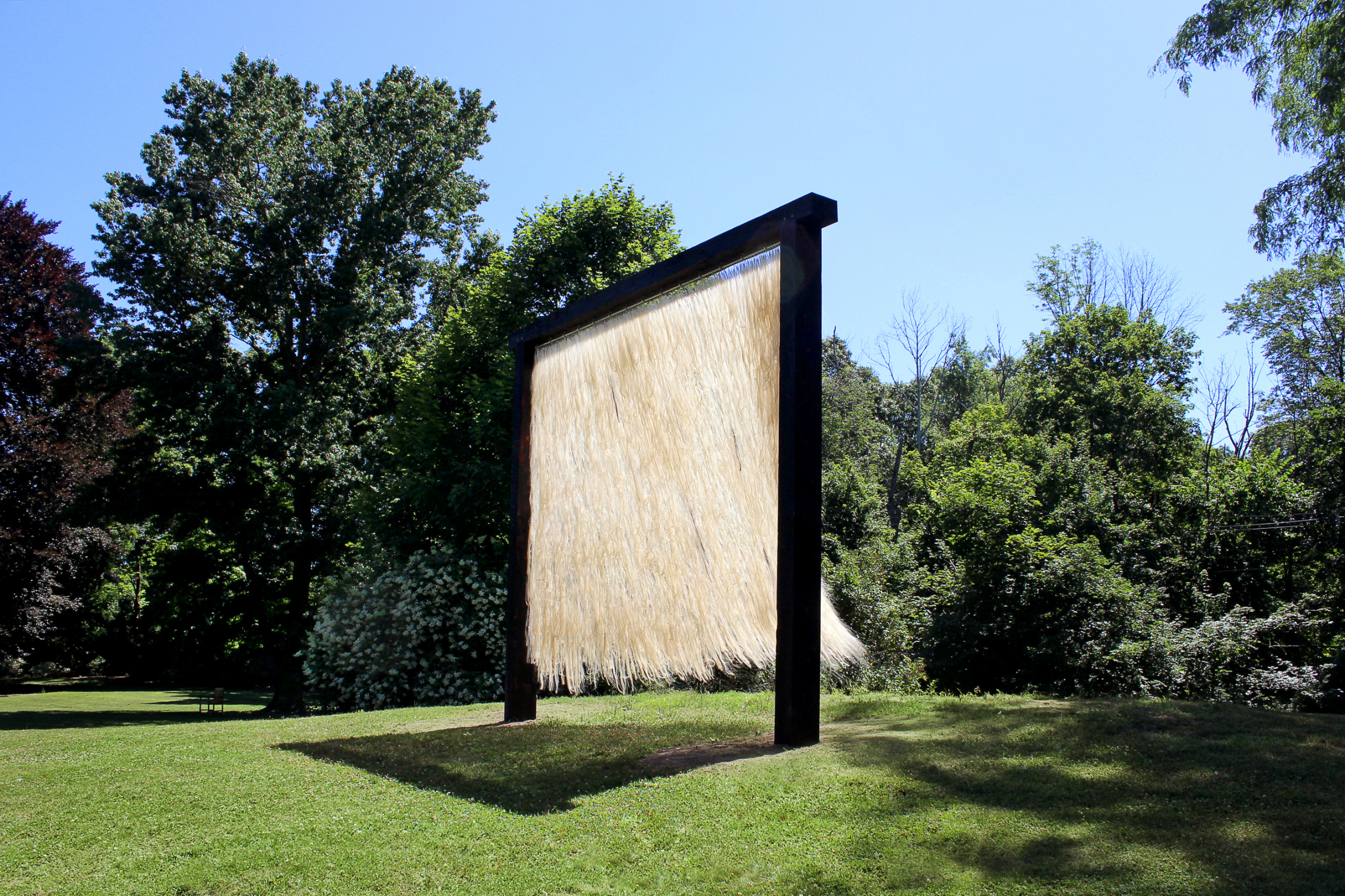
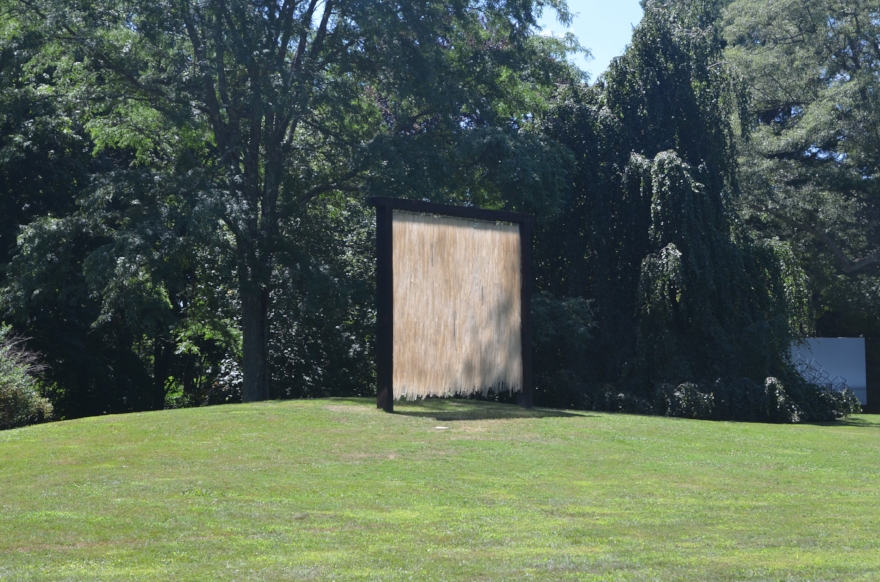
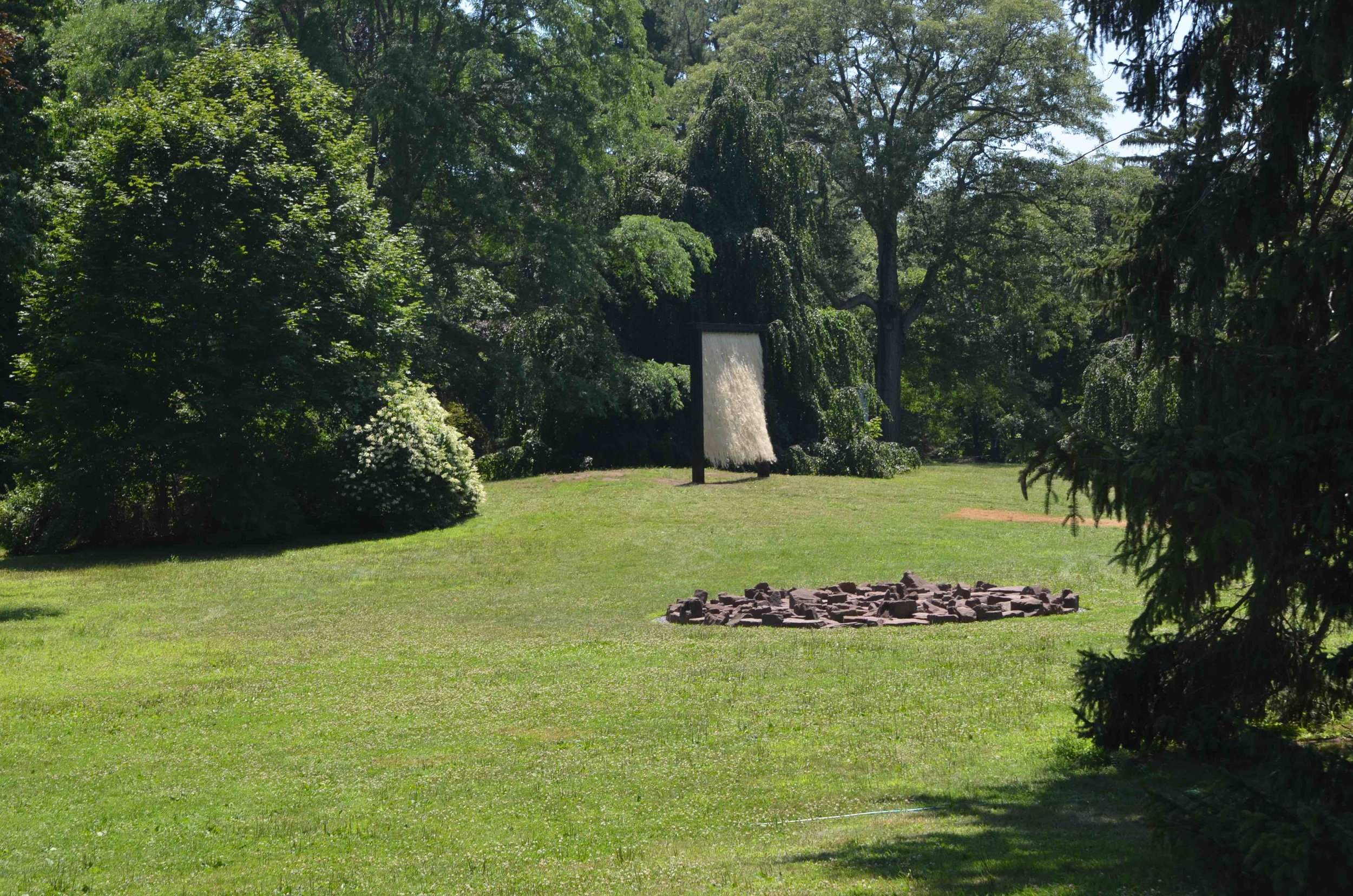






Pasture Song: On view through July, 2019 at deCordova Museum in Lincoln, MA
15x17x1.5', post and beam charred timber, netting and horse hair (re-claimed cello bow hair)
The bow, which draws out sound, is the lungs. The strings on the instrument are the vocal chords.
-Yo-Yo Ma
Memory of breath, of bows moving across cello strings and horses running in pastures and returning to New England barns arise from Pasture Song. Culture and nature are intrinsically connected in the material; re-claimed cello bow strings made of horse hair, with embedded history of horse and music. The music of the pasture is linked to music of the cello, from the summer symphony of crickets and grasshoppers rubbing their abdomen with their textured legs, to the string quartets and orchestras playing in symphony halls. Thousands of re-claimed cello bundles have been hand tied to netting presenting movement in the wind, loosening the material from its former task as cello bows allowing the horse hair to play in the breeze, closer to the way it moved on the horse. The netting has been arranged to expand and contract with the wind, like a cycle of breath, giving life to the flattened form we created.
While making Pasture Song, we imagined what music was heard when these re-claimed bow hair bundles rubbed over cello strings. The symphonies played in unison, much like the way a herd of horses would move through a pasture: slow, fast, playfully, alert, drowsy. Leftover rosin of the bows covered our hands as we tied the bow hair. Derived from Pine trees (also the material of the frame), rosin provides friction which produces sound for the bow passing over the strings. Some bundles were heavily rosined and frayed, and we imagined the passion of the musician who played until their bowstrings were worn and tired.
The structure is made from locally sourced and milled lumber near my studio in Vermont. The simple post and beam form was influenced by Vermont barn architecture, similar to one that might have housed horses. Building Heritage, builders that restore historic barns, partnered with us for the mortise and tenon joinery. The blackened patina is a method of charring the timbers to deter rot and insects and is a nod to barns that have succumbed to fire.
With thanks and appreciation to deCordova Museum, Bread and Butter Farm, Building Heritage and my extraordinary interns.
“For we forget our origins...in our towns and our cities, staring into our screens, we need constant reminding that we have been operators of computers for a single generation and workers in neon-lit offices for three or four but we were farmers for five hundred generations, and before that hunter-gathers for perhaps fifty thousand or more, living with the natural world as part of it as we evolved, and the legacy can not be done away with.”
Michael McCarthy Moth Snowstorm: Nature and Joy
